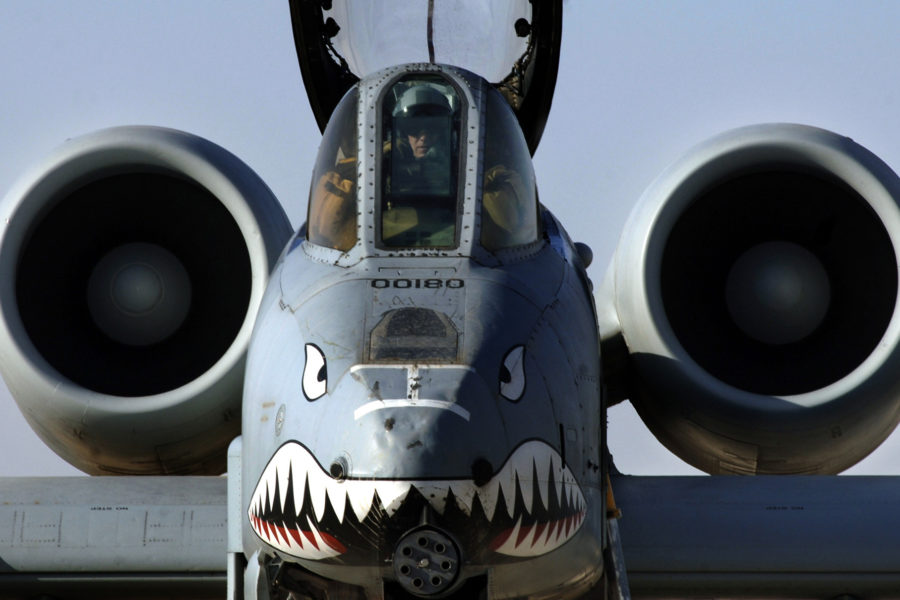As the Air Force’s broader focus shifts to the Pacific and Europe, the U.S. military will rely on aging close air support aircraft to meet the needs of its forces in the Middle East, according to U.S. officials.
A-10 Thunderbolt IIs plan to deploy to the region in April, a U.S. official told Air & Space Forces Magazine. The top commander of U.S. forces in the Middle East confirmed the deployment in testimony to the House Armed Services Committee on March 23.
“I have a requirement for additional air assets,” Gen. Michael “Erik” Kurilla, the head of U.S. Central Command (CENTCOM), said in testimony to the HASC, adding that A-10s “have been approved to come to CENTCOM.”
The Warthogs will make up a deployed force of manned aircraft that consists of F-15E Strike Eagles and F-16 Fighting Falcons.
The Pentagon now prioritizes the Pacific and Europe over the Middle East, limiting the forces available to CENTCOM. The influx of A-10s will enable CENTCOM to meet its requirement of two and a half squadrons, with a squadron in CENTCOM comprising around 12 aircraft. The U.S. is currently just under the two and a half-squadron requirement.
While the U.S. has pulled out of Afghanistan, it is still battling the remnants of ISIS trying to make a comeback in Syria. The U.S. has around 900 troops stationed in Syria.
Russia, termed an “acute” threat by the National Defense Strategy, has also become increasingly belligerent towards U.S. forces stationed in the region. Supporting the regime of Bashar Al-Assad, Russian fighters has been flying over U.S. forces, including the Al Tanf garrison in eastern Syria, according to the top Air Force commander in the region.
“There are some things that are concerning to me,” Lt. Gen. Alexus G. Grynkewich, the commander of Air Forces Central (AFCENT), told reporters March 7 at the AFA Warfare Symposium. “We’ve seen an increase in Russian air activity where there was a pause.” The Russian flights picked up at the end of February, he added.
“These profiles are not just passing through,” Grynkewich explained. “They fly into the airspace that is nominally under the deconfliction protocols, supposed to be where we are primarily operating in and the Russians are not. But they fly in there and they orbit around for a bit, and they do whatever it is that they’re doing.”
A-10s were a hallmark of the Global War on Terror, often seen strafing insurgent positions with their trademark cannon. But the A-10 is not a viable aircraft for its future force, Air Force Chief of Staff Gen. Charles Q. Brown Jr. has said, and the service is dropping the A-10 from its so-called 4+1 fighter plan and plans to retire the aircraft by 2029.
“We’re retiring A-10s faster than we originally thought,” Brown said at the McAleese and Associates defense conference March 15. The Air Force has tried to divest A-10s for years, but Congress had pushed back against the effort before starting to soften its stance recently.
A-10s are unlikely to be useful in any attempt to counter Russia’s air force, which operates advanced fourth-generation fighters in the region. The average age of the A-10 fleet, which has been upgraded over the years, is more than 40 years old, and concerns over its survivability against modern air forces and air defenses are a main driver of the Air Force’s push to retire the aircraft. It could, however, fulfill strike missions against ISIS militants and Iranian-backed militant groups.
“Every day I’m looking at the missions I have, the resources I’ve been allocated, and dynamically balancing risks against those,” Kurilla told the House committee.
The U.S. has sought to deter Iran and reassure its Middle Eastern allies by conducting massive air exercises such as Juniper Oak, a bilateral live-fire exercise with Israel in January involving 100 American aircraft. CENTCOM has also stood up several task forces, including Air Forces Central’s Task Force 99, that are looking for commercial autonomous solutions and artificial intelligence to bolster traditional platforms. The U.S. has also deployed fifth-generation air-to-air F-22 Raptors to the region on short notice to deter Iranian attacks on U.S. partners.
“We supplement our force posture with partnerships throughout the region and the employment of innovation, specifically unmanned systems and AI-enabled systems,” CENTCOM spokesman Col. Joe Buccino told Air & Space Forces Magazine.
